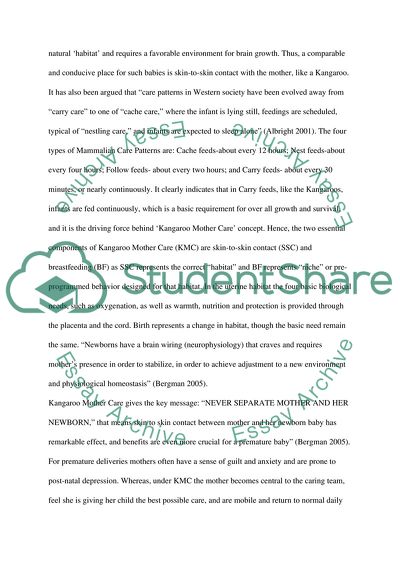Cite this document
(Paradigm of Kangaroo Care in the Preterm Neonate Essay Example | Topics and Well Written Essays - 1250 words, n.d.)
Paradigm of Kangaroo Care in the Preterm Neonate Essay Example | Topics and Well Written Essays - 1250 words. https://studentshare.org/nursing/1711007-paradigm-of-kangaroo-care-in-the-preterm-neonate
Paradigm of Kangaroo Care in the Preterm Neonate Essay Example | Topics and Well Written Essays - 1250 words. https://studentshare.org/nursing/1711007-paradigm-of-kangaroo-care-in-the-preterm-neonate
(Paradigm of Kangaroo Care in the Preterm Neonate Essay Example | Topics and Well Written Essays - 1250 Words)
Paradigm of Kangaroo Care in the Preterm Neonate Essay Example | Topics and Well Written Essays - 1250 Words. https://studentshare.org/nursing/1711007-paradigm-of-kangaroo-care-in-the-preterm-neonate.
Paradigm of Kangaroo Care in the Preterm Neonate Essay Example | Topics and Well Written Essays - 1250 Words. https://studentshare.org/nursing/1711007-paradigm-of-kangaroo-care-in-the-preterm-neonate.
“Paradigm of Kangaroo Care in the Preterm Neonate Essay Example | Topics and Well Written Essays - 1250 Words”. https://studentshare.org/nursing/1711007-paradigm-of-kangaroo-care-in-the-preterm-neonate.


